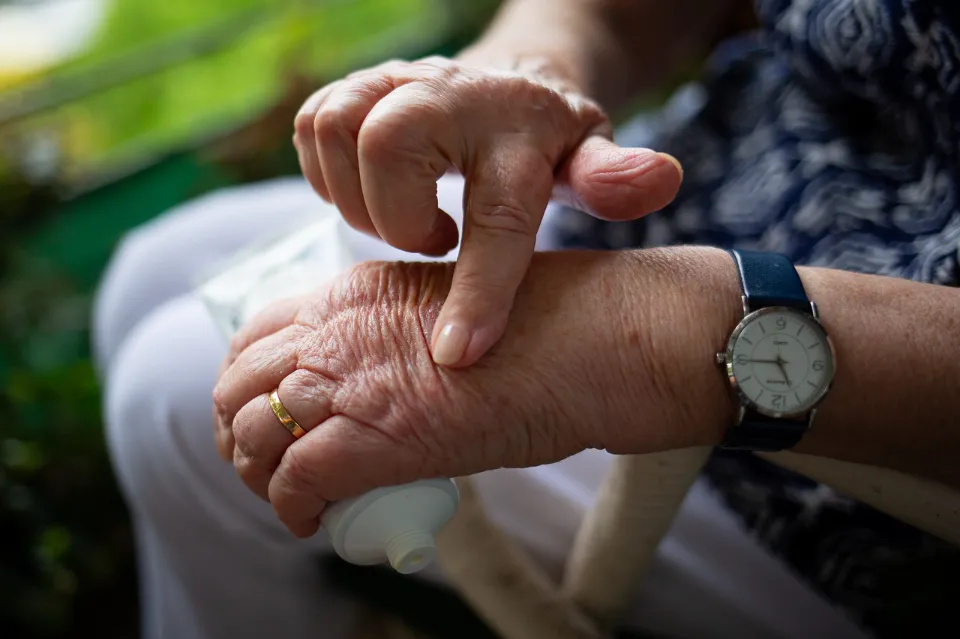About one-fourth of American adults suffer from arthritis, making it a widespread condition. The likelihood of developing or making certain types of arthritis worse in adults can be increased by engaging in certain behaviors and having certain characteristics (called risk factors). Some risk factors are within your control, while others are not. Changes to the risk factors you have control over can lower your risk of developing arthritis or making it worse.
Joint stress can increase with excess weight, especially on joints that support weight, like the hips and knees. keep a healthy weight. A balanced diet and regular exercise can help you lose weight.
Arthritis cannot be completely avoided. However, there are steps you can take to lessen the likelihood of joint stiffness and pain as you age. We’ll offer some guidance to you in this post.
What is Arthritis?
One or more joints may swell and become tender due to arthritis. The main symptoms of arthritis are joint pain and stiffness, which typically worsen with age. Rheumatoid arthritis and osteoarthritis are the two types of arthritis that are most prevalent.
More than 100 different types of arthritis exist. Rheumatoid arthritis and osteoarthritis are the two most prevalent kinds.

Osteoarthritis
This “wear and tear” arthritis is the most common form. It frequently results from aging, but it can also be brought on by trauma or being overweight. It takes place when the tissue that protects your joints deteriorates, leading to discomfort and stiffness. Osteoarthritis can affect any joint in your body but is most common in the hands, knees, hips and spine.
Rheumatoid Arthritis
Joint inflammation is brought on by this autoimmune condition. If you don’t treat it, the inflammation can cause severe joint damage.
The heart, lungs, and eyes can also become affected by rheumatoid arthritis, which typically affects multiple joints in addition to these organs. Rheumatoid arthritis patients occasionally develop lumps over the joint areas, frequently on the knuckles, elbows, and heels.
Rheumatoid arthritis is thought to have unknown exact causes. Some think it happens when a bacteria or virus confuses the immune system and causes it to attack joints.
Causes: Why Arthritis Happens?
Numerous forms of arthritis are unknown in terms of their exact causes. The immune system’s flaw, which leads to the body attacking its own tissues in the joints, is thought to be the primary cause of the majority of forms of arthritis. This could be passed down through genetics.
Other types of arthritis can be brought on by immune system issues or metabolic disorders like gout.
Environmental factors that may contribute to the development of osteoarthritis include:
- Obesity, which puts added strain on joints
- Activities that involve repetitive movements of a particular joint
- Previous damage to a joint, such as from a sports injury
Additionally, smoking and not getting enough exercise both increase your risk of developing arthritis.
Reactive arthritis is the term used to describe arthritis brought on by an infection. It’s very difficult to diagnose and can develop at any age but is more commonly seen in younger people. The duration of reactive arthritis ranges from a few weeks to six months.
How to Reduce the Risk of Developing Arthritis?
Treatments for Overweight and Obesity
Compared to those who are not overweight, those who are overweight or obese are more likely to develop knee osteoarthritis. Additionally, obesity can exacerbate knee osteoarthritis. Joints, especially weight-bearing joints like the hips and knees, are put under more strain when a person is overweight.
What you can do: Keep a healthy weight. You can lose weight and keep it off by eating well and exercising regularly. Learn how to exercise safely and eat healthily while dealing with arthritis.
Read more: Can Being Vegan Help Arthritis: a Helpful Guidance – Elder VIP
Treatments of Smoking
Smoking cigarettes raises a person’s risk of getting rheumatoid arthritis (RA) and can make the condition worse. Additional health issues may result from it. Smoking can also make it more difficult to stay physically active, which is an important part of managing RA and other types of arthritis.
What you can do: Stop smoking. Get help by visiting I’m Ready to Quit on CDC’s Tips From Former Smokers website.
Treatments of Infection
Numerous microorganisms, including viruses and bacteria, can infect joints and possibly lead to the onset of some types of arthritis.
What you can do: If your joints are red, warm, or swollen, consult a doctor right away. It could be an infection.

Treatments of Joint Damages
Knee bending, repetitive stress, and other joint injuries or overuse can harm a joint and hasten the onset of osteoarthritis in that joint.
What you can do: By performing exercises specifically designed for those joints, you can prevent injuries to your joints. For exercises to avoid knee injuries, go to the OA Action Alliance website external icon.
Treatments of Special Jobs
Osteoarthritis of the knee is linked to jobs that require frequent knee bending and squatting.
What you can do: Make sure your workplace is free of fall hazards and has the area, furnishings, and tools that are appropriate for your physical capabilities and restrictions. From the National Institute for Occupational Safety and Health (NIOSH) of the CDC, learn about ergonomics and musculoskeletal disorders.
Other Treatments for Developing Arthritis
If you start to develop arthritis, see your doctor as soon as symptoms appear. Arthritis may worsen your joints’ damage if you wait longer to seek treatment. Keeping you mobile and slowing the progression of your arthritis are two goals of your doctor’s recommended treatments.
Arthritis treatments include:
- Medications that treat inflammation and pain. These may include over-the-counter medications like aspirin, acetaminophen, and ibuprofen, as well as medicines your doctor may prescribe.
- Immune system suppressing medications. These may be taken orally or injected into the affected joint.
- Creams and ointments for the skin. Commonly available over the counter, these treatments are applied to the skin to reduce joint aches and pains.
- Physical therapy. Physical therapy occasionally can help muscles become stronger and the range of motion is enhanced.
- Surgery. Rupture or replacement of severely arthritic joints may be necessary. The hip and knee replacements are the joints that happen the most.
Final Thoughts
In actuality, arthritis cannot be completely avoided. But you can help reduce the risk and delay the potential onset of certain types of arthritis. Do what you can to keep your joints mobile and functional and prevent the pain and disability that come with arthritis if your joints are currently healthy.



